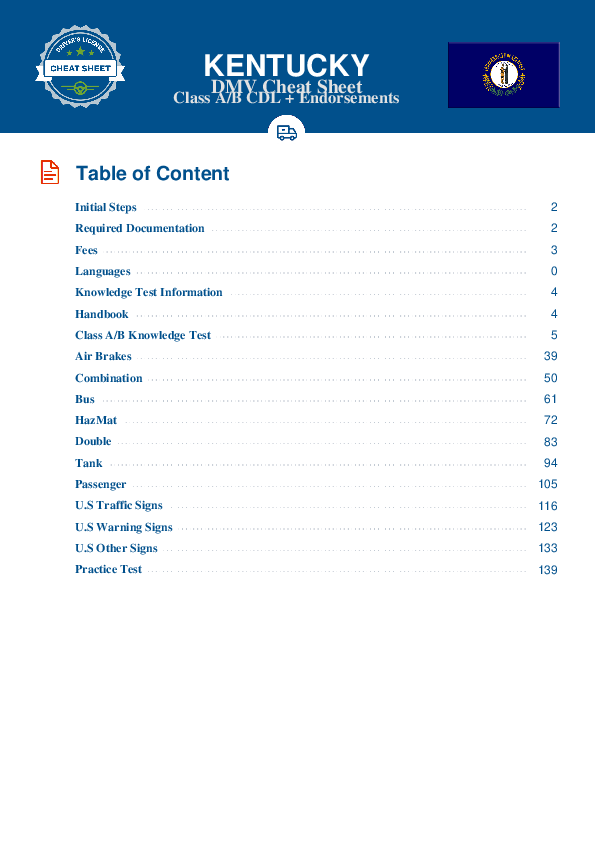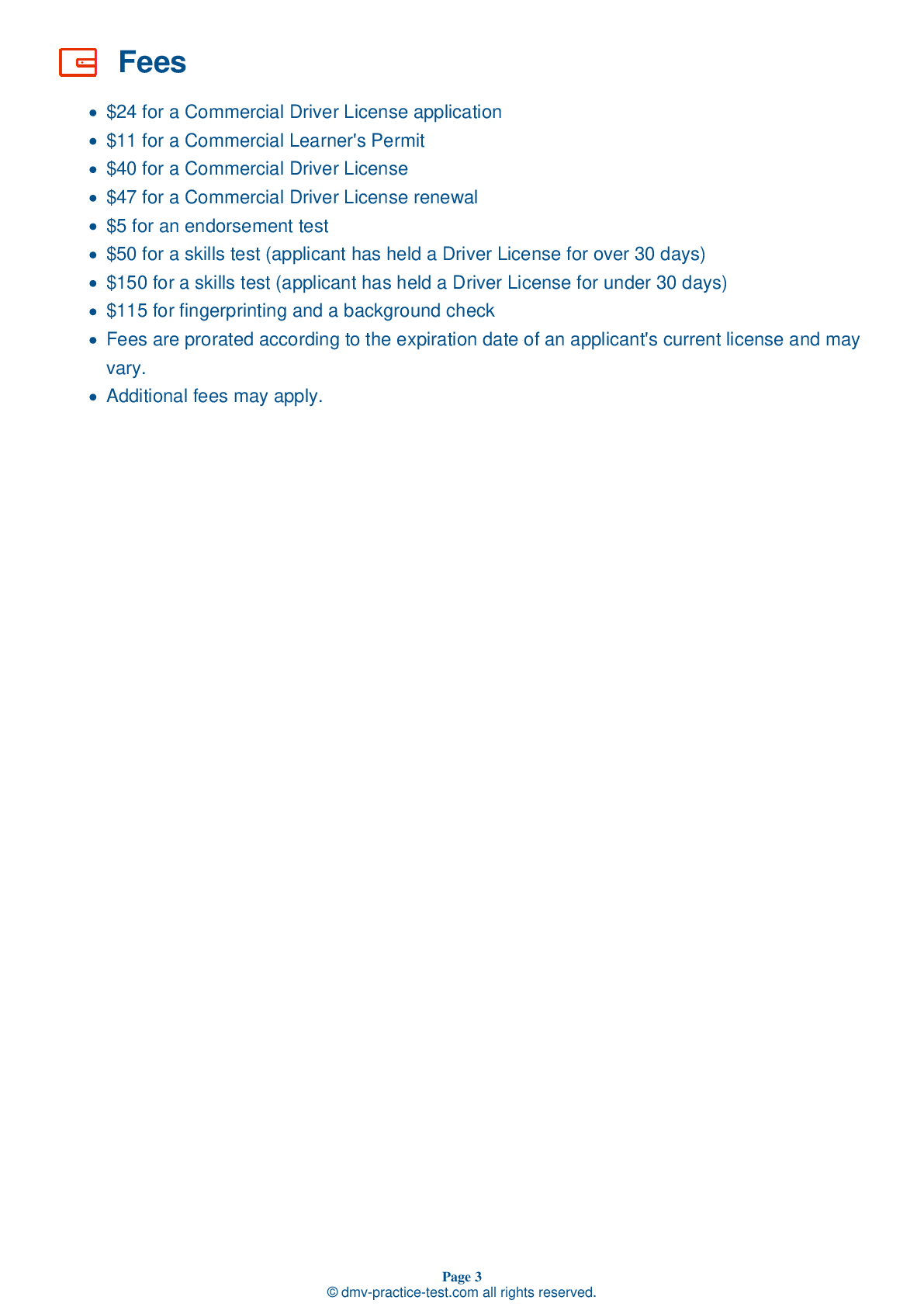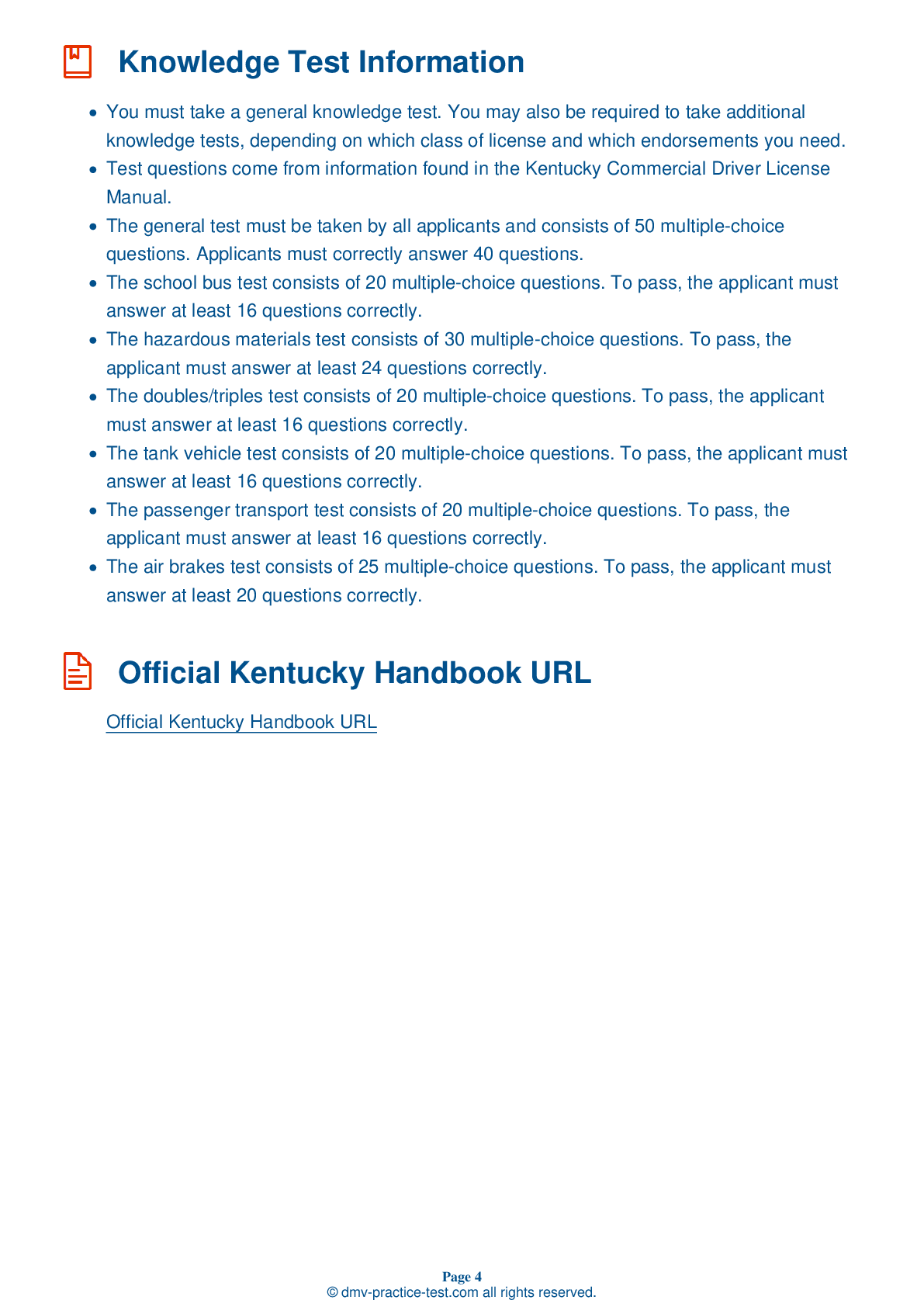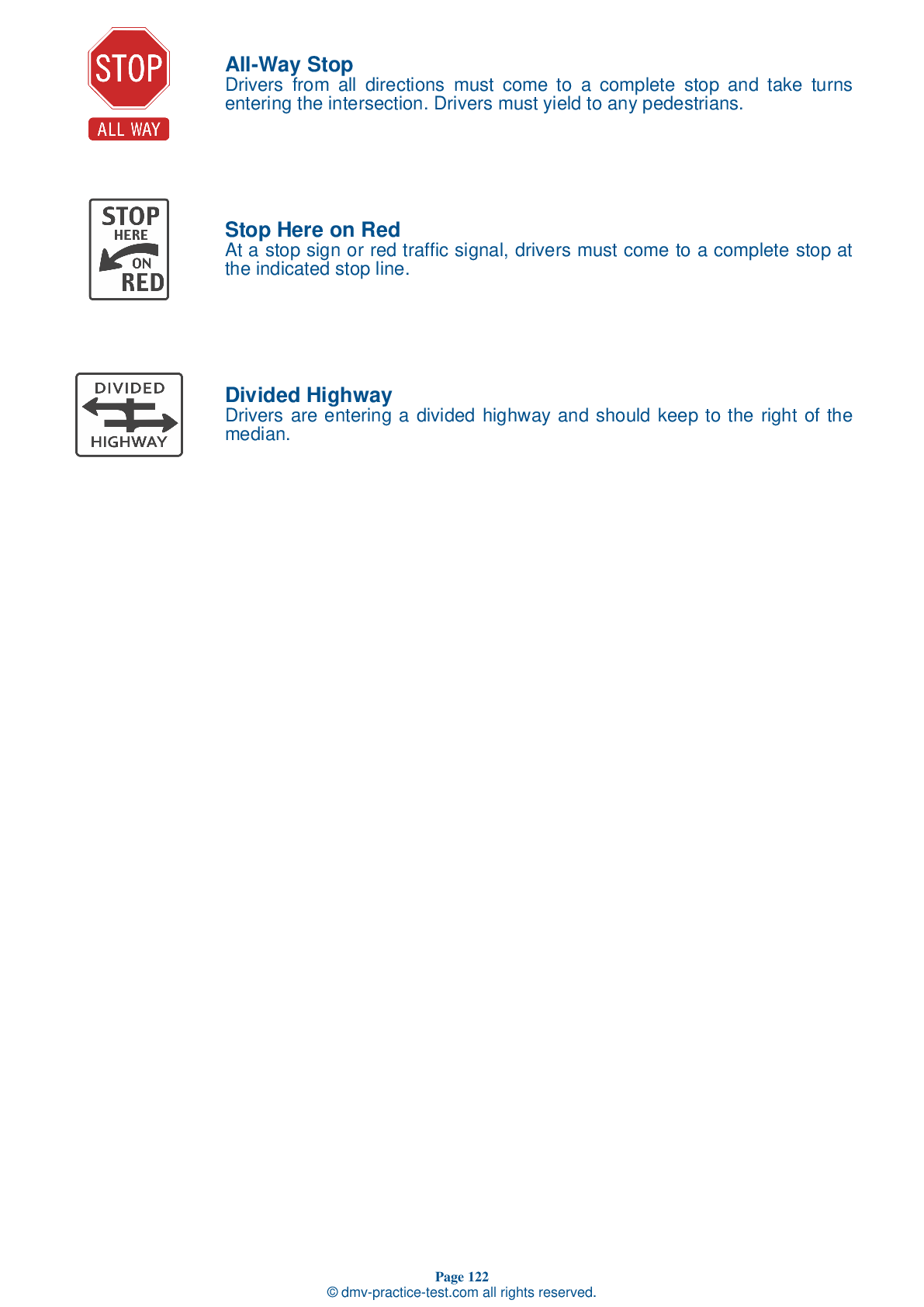Knowledge Test Class B #1
Class B Driving Test | Kentucky 2025 #1 Page 7 of 7
Train for FREE online with our Kentucky class B license test. The official exam test consists of several obligatory parts, with all of them checking your knowledge of different blocks of road rules. If you need to obtain a KY CDL class B permit in 2025, practice as much as possible. Free sample tests published on our website will help you check and improve your knowledge and boost your grades. Please bear in mind that CDL class B requirements may vary from state to state.
50
40
20
43 . Of the following, which is not a recommended way to spot potential signs of trouble?
During a trip, you should regularly make checks to ensure that your vehicle is operating properly. Check the instrument panel and gauges; look at your mirrors; and examine the tires, cargo, and lights. Use all of your senses and be alert for anything that could be an early indication of trouble.
44 . How much water must be present for a vehicle to hydroplane?
Hydroplaning is an effect in which a vehicle's tires lose traction with the surface of the road and instead glide along a layer of water. There does not have to be much water on the road for this to occur.
45 . Without engine oil:
It is critical that an engine have sufficient oil pressure. The engine can be destroyed rapidly if run without oil.
46 . Move over laws require:
If an emergency vehicle using its flashing lights is stopped on the side of a multilane road, move over laws require drivers to vacate the lane directly next to the vehicle, if possible. If a driver cannot move over safely, they must slow down and proceed with caution.
47 . While driving a vehicle, if an unusual noise or feeling occurs, the driver should:
Use your senses during trips to help you identify mechanical issues. If you see, hear, smell, or feel anything that could indicate trouble, you should stop and check it out.
48 . When entering traffic, a large vehicle usually needs:
A large vehicle requires more space when entering or crossing traffic than a smaller vehicle. This is not only because the vehicle itself is larger, but also because it needs a longer distance to accelerate.
49 . Why should the steps of a pre-trip inspection be done in the same order each time?
Pre-trip inspections should be conducted in the same way every time. This will reinforce the steps, making it less likely that you will forget to inspect something important.
50 . What happens if you don’t pass the air brakes endorsement test?
If you do not take or pass the air brakes test, you will be restricted to operating vehicles without air brakes.
2025 Kentucky | Frequently Asked Questions
A CDL Class A license in Kentucky allows drivers to operate any combination of vehicles with a Gross Combination Weight Rating (GCWR) of 26,001 lbs or more, provided the towed vehicle is heavier than 10,000 lbs. This typically includes tractor-trailers, truck and trailer combinations, flatbeds, livestock carriers, and tank vehicles.
A Class A CDL license in Kentucky permits the operation of vehicles such as tractor-trailers, truck and trailer combinations, tanker vehicles, livestock carriers, and flatbeds. Essentially, it allows you to drive any combination of vehicles with a Gross Combination Weight Rating (GCWR) of 26,001 lbs or more where the towed vehicle is over 10,000 lbs.
To obtain a Class A CDL license in Kentucky, applicants must be at least 18 years old for intrastate driving and 21 for interstate. They must pass a vision test, hold a regular driver's license, complete a CDL General Knowledge test and any relevant endorsement tests. A skills test in the vehicle type that the driver's license will be issued for is also required.
In Kentucky, you must be at least 18 years old to qualify for a Class A Commercial Driver's License (CDL) for intrastate driving (within Kentucky only). However, to drive across state lines or handle hazardous materials, you must be at least 21 years old.
Endorsements are not required for a Class A CDL license, but they can expand your driving capabilities. For example, a Hazardous Materials (H) endorsement allows you to haul hazardous materials, while a Tank Vehicle (N) endorsement lets you drive tank vehicles. Obtaining these endorsements requires additional knowledge and skills tests.
The Class A CDL skills test in Kentucky encompasses three parts: a vehicle inspection test, a basic controls test, and a road test. The vehicle inspection test checks your ability to assess the safety of your vehicle. The basic controls test evaluates your ability to maneuver and control the vehicle. The road test assesses your on-road driving skills.
Yes, Class A CDL license holders in Kentucky may face limitations based on their specific endorsements or restrictions. For instance, if you lack a passenger or school bus endorsement, you're prohibited from driving those vehicles. Also, if you have an air brake restriction, you cannot operate vehicles with air brakes. Other restrictions may apply based on medical evaluations or driving tests.
In Kentucky, the written Class A CDL test is primarily administered in English. However, some locations may offer the test in Spanish. It's important to note that all drivers must understand English to a degree that allows them to communicate with officials and read road signs, as per federal regulations.
Yes, you can request accommodations for the Class A CDL written test in Kentucky if you have a disability. Contact the Kentucky Division of Driver Licensing and provide documentation of your disability. They will guide you through the process to ensure your testing environment meets your needs. Accommodations may include extra time, a separate room, or assistive technology.
Yes, if you fail the Class A CDL written test in Kentucky, you can retake it. There is a waiting period of one day before you can try again. You will need to pay the testing fee each time. It's recommended to study the CDL manual thoroughly before your next attempt to increase your chances of passing.



